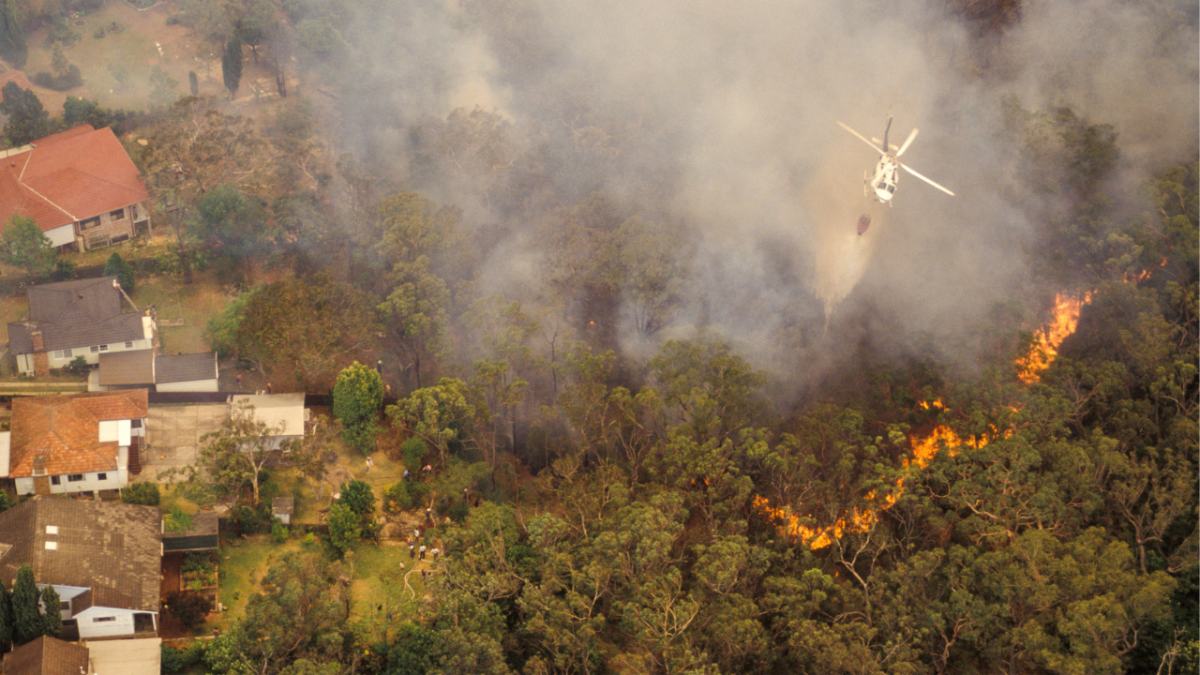
NSW fire crews battled 70 fires across the state over the weekend due to the unseasonably warm and windy conditions.
Hundreds of firefighters were tasked with containing the blazes after 40-60km winds on Friday created high-risk conditions across the state, particularly on the mid-north coast.
Greg Allan, a spokesperson for NSW Rural Fire Service (RFS), told ABC News that there were still over 70 bush or grass fires burning on Sunday night, with 20 of them yet to be contained.
“As of Sunday evening there are around 445 firefighters on the ground with about 150 trucks,” Allan said.
There were also six aircraft being used to combat the blazes on Sunday, this included the RFS Chinook water bombing helicopter, that was used for the first time to help contain a fire in Coutts Crossing at Kangaroo Creek Road.
“Fires can burn at any time of the year but we did see those very strong winds and elevated temperatures over the last few days fuel that fire activity,” Allan said.
Two of the fires in Clarence Valley over the weekend reached a Watch and Act level of severity, but they were brought under control with the assistance of the RFS aircrafts.
The Pacific Highway was closed for two days due to a fire in Clybucca, and one in Kundaberg near Kemspey nearly threatened properties before fire fighters were able to contain the blaze.
RFS Lower North Coast district manager Liz Ferris said that the fires over the weekend burnt more than 1,000 hectares of land on the mid-north coast.
“That’s quite significant, and when you’re looking at in excess of 35 fires in one day, that is quite excessive,” she said.
Fire crews from all across the state were deployed to help get the blazes under control, with crews from the Central Coast, Hunter Valley and Mid Coast districts all working to contain the fires.
“Because we had 35 active fires and the wind … it just overwhelmed what resources we have,” said Ferris.
“We were very fortunate to get some quick assistance … and also aviation support.”
The cause of the Kempsey fires is currently under investigation, with some suspected of being suspicious.
“Some of them have been landowner burns that were already burning and they weren’t aware of the increased wind, which picked up their embers,” said Ferris.
“There’s several that are suspicious and we’re working with NSW Police who are on the ground at the moment, doing some investigations in that area.”
So, with NSW fire season seemingly starting months than expected, what can we do to prepare?
Greg Allan said that the weekend fires are a reminder that for many spots in NSW, fire season is already underway and that residents should be beginning preparations for the continuation of bush fire season.
“The statutory bushfire danger period starts on October 1 but there are some areas each year that do start early and we have six areas in the north of the state that have entered the bushfire danger period,” he said.
“Over the last couple of years we have seen that increase of rain and definitely flooding, so there has been an increase in vegetation particularly west of the divide where that grass growth has been quite considerable.
“That’s now drying out or has dried out in most areas, and that’s not to say that we won’t see bushfires along the coast, but that grass-fire threat particularly will be of most concern.”
The unseasonably hot and dry weather could be thanks to El Niño, so we should prepare for a very hot, dry and potentially fire-filled summer season this year.



